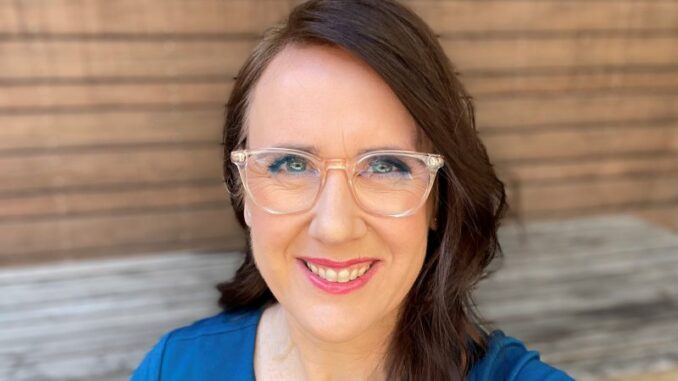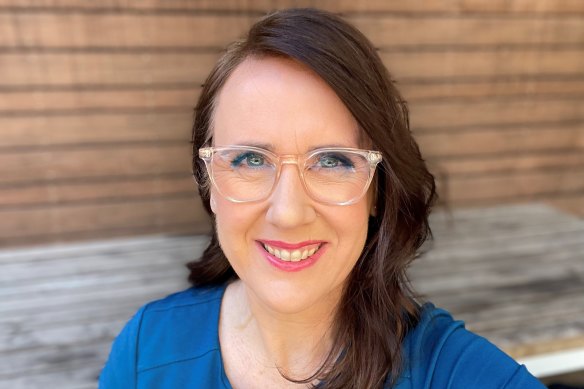
Save articles for later
Add articles to your saved list and come back to them any time.
Sue Ellson saves around $5000 a year on a string of annual insurance premiums by self-insuring rather than going through an insurance firm.
She doesn’t bother with hospital cover, but does have extras health cover. She rents, which means she can avoid the cost of home insurance. And she doesn’t have many assets, so she doesn’t bother with contents insurance.
The 58-year-old self-employed Melburnian says premiums were much higher based on her age. Policies she explored stipulated that she wouldn’t be able to claim income protection insurance until she had been incapacitated for three months.
Sue Ellson saves around $5,000 a year by opting for self-insurance.
“I would have well and truly recovered by then, so paying a ridiculous premium has no useful purpose for me,” she says.
Ellson doesn’t bother with income protection or cyber insurance, but insists on back-ups of everything. Professional association fees mean her professional indemnity insurance is covered. She does, however, always insure her car and carries roadside assistance.
Instead, she has money set aside to cover time off work or unexpected medical bills. By her calculations, three months of living expenses set aside in her bank account will cover her for most things.
“If something happens, I’ve always got immediate access to cash. What’s even more valuable is that I know that if a crisis occurs, I’m not going to be on the street,” Ellson says.
She pays for massages, dancing and reflexology. “I consider those to be my health maintenance costs rather than health insurance costs.”
While research suggests that rising insurance premiums are creating a crisis of underinsurance in Australia, there are fears that more and more Australians will abandon insurance policies as cost of living pressures bite hard and premiums continue to rise.
A report by Actuaries Institute estimates that 1.24 million Australian households – nearly one in eight – are facing home insurance affordability stress, up from one million households a year ago.
The research on home insurance affordability found premiums rose by 28 per cent in the year to March, meaning homeowners are now paying an average $1,894 across all states. Those in high-risk properties such as flood-prone areas have seen premiums rise by up to 50 per cent, which is the biggest rise in two decades.
While not widely recognised as an alternative to insurance, the concept of self-insuring elements of your life by maintaining a fund to cover possible losses, as opposed to purchasing an insurance policy, is appealing to some Australians amid rising household costs.
The industry watchdog recently found that a number of insurance companies have ripped off their customers, overcharging $815 million that it has ordered must be repaid to customers.
Consumer advocacy group CHOICE says many people are being forced to pay higher premiums, reduce their cover or abandon insurance entirely, with research finding that 87 per cent of policyholders have seen premiums rise. Insurers paid out $36.5 billion in claims last year.
Private health insurance is also increasingly viewed as a ‘nice to have’ rather than a need, with 37 per cent of singles and 31 per cent of couples having no private health insurance, and more than half (53 per cent) of single parent households having no cover.
Health insurance is increasingly been viewed as something ‘nice to have’ rather than essential.Credit: Isabella Porras
Life insurance cover has also been pushed down the list of essential items as households face unprecedented pressure to keep a roof over their heads. Research shows that 44 per cent of Australians don’t have any life insurance and have no intention of taking out a policy in the future.
For those considering the self-insurance line, it’s important to note your lender may require home insurance cover as part of your home loan, while third-party car cover providing the most basic coverage in the event of property damage or medical treatment is mandatory.
Meanwhile, the Insurance Council of Australia warns that underinsurance is a prevalent issue in Australia. While underinsurance can occur with any type of insurance, it’s most common in the home, contents and life insurance sectors.
- Advice given in this article is general in nature and is not intended to influence readers’ decisions about investing or financial products. They should always seek their own professional advice that takes into account their own personal circumstances before making any financial decisions.
Expert tips on how to save, invest and make the most of your money delivered to your inbox every Sunday. Sign up for our Real Money newsletter.
Most Viewed in Money
From our partners
Source: Read Full Article

